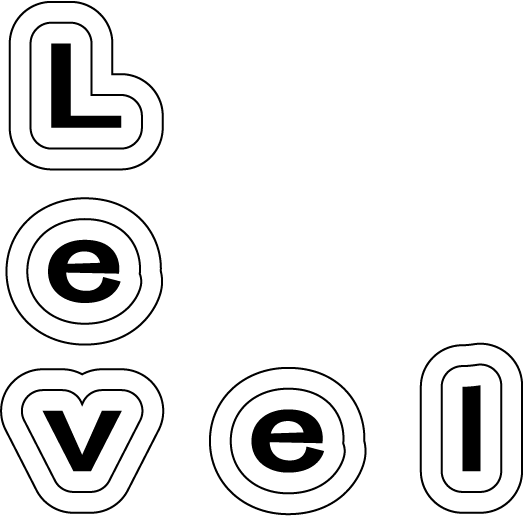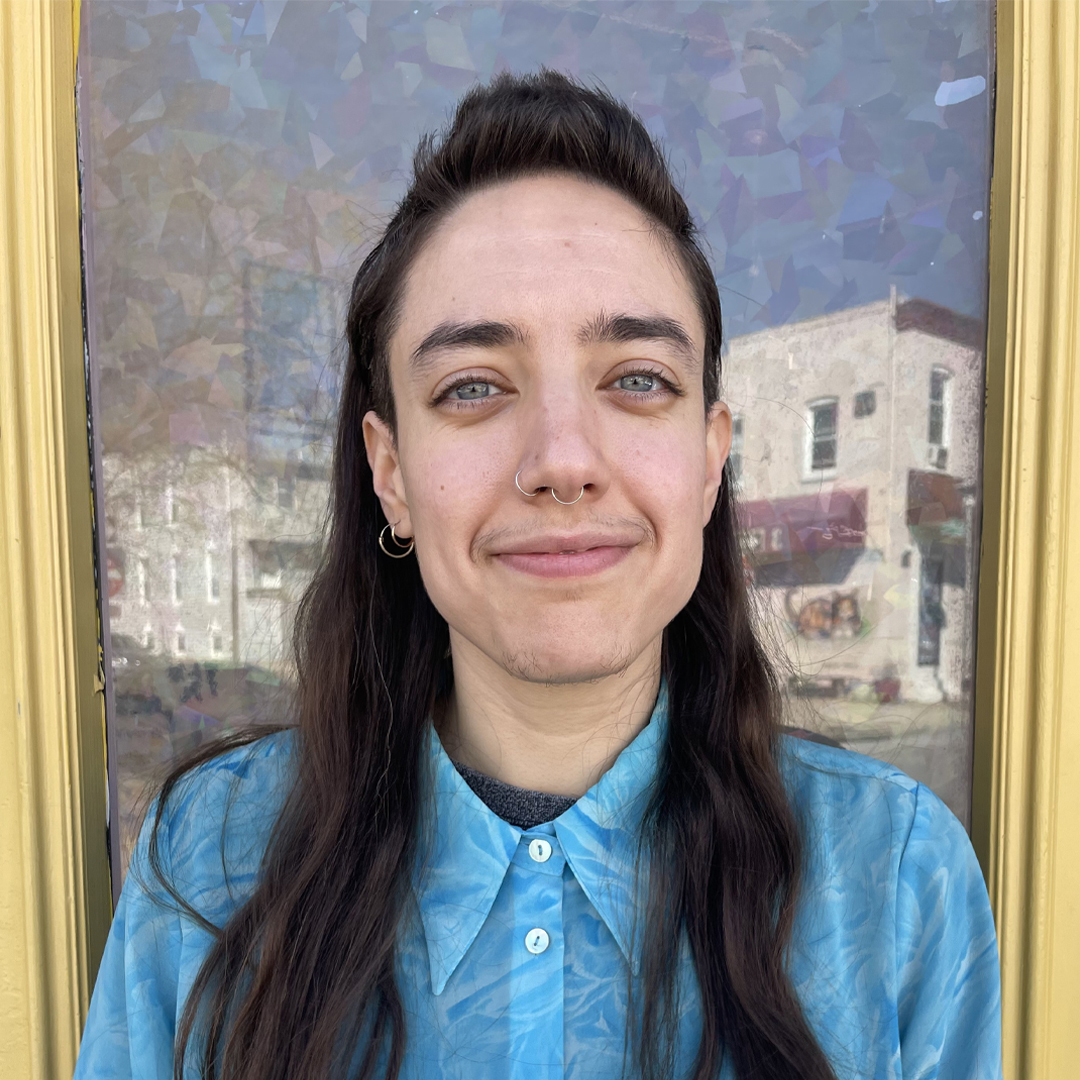of


“There is nothing new under the sun, but there are new suns.” –Octavia Butler

4 minute experience, or the time it takes to peruse a photo album.
BY ALX VELOZO
In their new performance Level, artist Alx Velozo choreographs an intimate dance atop a padded gym mat in an otherwise empty, mirrored rehearsal space. With their eyes closed and a soundtrack played inaudibly through their headphones, Velozo progresses through a series of full body movements — always primarily tethered to the ground — contorting limbs to an unheard playlist. Covering their body is a garment adorned with hundreds of bubble levels, each vial of neon liquid constantly seeking level ground. As part of an ongoing exploration of illness, queerness, and bodily agency, Level evokes both erotics and pain in its simultaneous search for true rest and the ecstasy of a dance floor. In the following text, Velozo introduces their new commission and explores what it means to reorient towards horizontality.
[Video Description: A white, non-binary, trans cane-user dances on a blue gym mat on a light wooden floor. Their black cane lays parallel to one side of the mat, just touching the adjacent mirrored wall. The disabled dancer is costumed in a long sleeve, tight, black shirt adorned with nearly five hundred bubble levels. The video documents them dancing horizontally across the mat to music played in their headphones, inaudible to the audience. Throughout the fifteen minutes, the camera cuts between an overhead view of the dancer on the mat and close-ups of the bubbles within the levels shifting with the dancer’s movement.]
My performance Level began as an effort to materialize and visualize my experience of vestibular dysautonomia. I have a chronic illness in which my autonomic system does not regulate my blood pressure, blood volume, and oxygen levels in relation to changes in position. This leaves me with “air hunger”: breathlessness and fatigue when I am forced into vertical positions. The world constructed in the image of ableism prioritizes a vertical body, a standing body, a tall adult body that is upright and in forward motion. My costume of levels creates a material parameter that rewards horizontality rather than verticality. The levels provide bubble feedback only for minor deviations from horizontal positions.
In making this piece, it felt important to consider what I get from a live performance for an audience versus a performance for a camera. A performance for a camera, although still effortful, proves to be much more accessible for me. It can be replicated infinitely without the physical means of my body, and there is constant opportunity for pause. Even more saliently, the camera provides an incredible physical closeness that would not be available in a live performance. It made me revisit the closeness of lens and audio in haptic cinema. I wonder if this closeness has to do with the difficulty of translating sensation between bodies. Physical closeness may be the best option for approaching our threshold for communicating sensation across our physical separateness.
Even in the most medically advanced technological spaces that I frequent as a patient, I am only asked to describe pain by assigning it a number. This vacant math loses so much in its translation. In this performance there is both a lot of pain — evidenced in my sick body — and also a lot of pleasure, and they blur and distort one another. While dancing, I am listening to a music playlist from a workshop that I initially developed in the Dancing Disability Lab at the University of California, Los Angeles called “Club Bed.” It is a guided workshop surrounding horizontality and access to club space as a disabled queer person while reimagining movement in relationship to a sick horizon line. It felt like an intuitive step to have the trace of this playlist in this performance.
I am fortunate to create inside an ecosystem of immense support. I would like to give a special thanks to Ellery Bryan as the videographer of Level and Najee Haines-Follins’s support as the production assistant, as well as Geo McCandlish, who photographed my portrait.

[ID: A white, non-binary, trans person with long dark hair, thick eyebrows, and a faint mustache smiles at the camera. Their ears and nose are hooped with gold rings, and their bright blue, watery button down shirt matches their eyes. They are in front of a yellow framed window that reflects a sunny Baltimore street behind them.]
Alx Velozo
They // Them // Theirs
Baltimore, MD
Alx Velozo is a trans and disabled sculptress, educator, and performance artist raised in Timucua lands (occupied North Florida) and currently residing in Piscataway lands (occupied Baltimore). Velozo’s installations and performances combine cultural imaginations of illness, touch, kink, the medical industrial complex, and kinesthetic learning models. They explore this research through mold-making processes, workshop and pedagogical facilitation, and movement and object-based performances. They received an MFA in Sculpture + Extended Media from Virginia Commonwealth University and a BFA from the Cooper Union for the Advancement of Science and Art. Velozo has exhibited, taught, and facilitated workshops in New York, Philadelphia, Richmond, Miami, and Jersey City and internationally in Mexico, Canada, and New Zealand.
